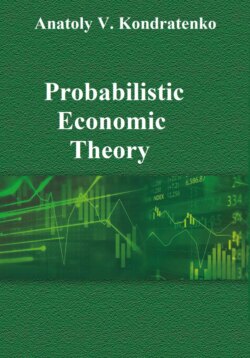Читать книгу Probabilistic Economic Theory - Anatoly Kondratenko - Страница 16
PART A. The Agent-Based Physical Modeling of Market Economic Systems
CHAPTER II. The Constructive Design of the Agent-Based Physical Economic Models
1. The Basic Concept of Physical Economic Design
ОглавлениеBy stretching a point, we can say that the basic concept of design of our physical economic models is skeuomorphism. Let us explain what this concept means in our case. As we have already mentioned repeatedly in this book, when constructing physical economic models we strive to reach a formal mathematical, linguistic and even graphical similarity to their physical prototypes. Specifically, this concerns both the structure and the dynamics, as well as the language and the methods of representation of the obtained results, including graphics. We consistently follow this basic concept of design throughout the book. Let us stress another point. Our main task in the book is the construction of economic models that, in as much as possible, highly resemble or copy the known form and custom physicists’ models of many-particle systems. This facilitates understanding of the models and makes it possible to use the existing, detailed language of physics within a new economic framework. For example, the language of wave functions and probability distributions will be widely used here below, although this, of course, unavoidably leads to the appearance in the theory of a large quantity of neologisms. This may strongly hamper the reading of texts by economists, but substantially facilitates this process for specialists in the fields of natural sciences. We think that this basic design concept is quite adequate for building physics-based models of economic systems.
We begin with the requirement that the graphical scheme of the physical models must be similar to the picture of the many-particle physical systems, such as polyatomic molecules, for instance. Main elements of our physical models of economic systems are shown schematically in Fig. 1. A large sphere covers a market subsystem or economy consisting of active market subjects: buyers who have financial resources and a desire to buy goods or commodities, and sellers who have goods or commodities and a desire to sell them. They are the sellers and the buyers who form supply and demand (S&D below) in the market. Small dots inside the sphere denote buyers, and big ones denote sellers. The cross-hatched area outside the sphere represents the institutional and external environments, or more exactly, internal institutions such as the state, government, society, trade unions etc., and the external environment including other markets and economies, natural factors etc. It is evident that all elements and factors of the system influence each other; buyers compete with each other in the market for goods and sellers compete with each other for the money of buyers. Buyers and sellers interact with each other, permanently influencing each other’s behavior. Institutions and the external environment influence all the economic agents, including not only businesses but also ordinary people. In other words, all the economic agents are influenced by institutional and external environments and interact with each other.
Fig. 1. The physical model scheme of an economic system: a market consisting of the interacting buyers (small dots) and sellers (big dots) who are under the influence of the internal institutions and the external environment beyond the market (covered by the conventional imaginary sphere).
In order to develop a physical model of the economic system, it is necessary to learn to describe in an exact, mathematical way both movements (behaviors and influences) of each economic agent, i.e., buyers and sellers, the state and other institutions etc., and interactions with each other. It is the goal to derive equations of motion for market agents – the buyers and sellers – who determine the dynamics, movement, or evolution of the market system in time.
